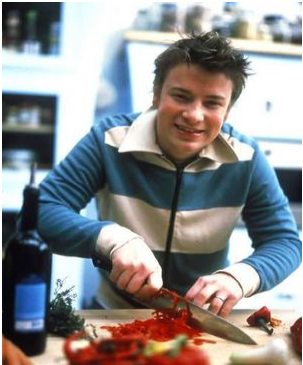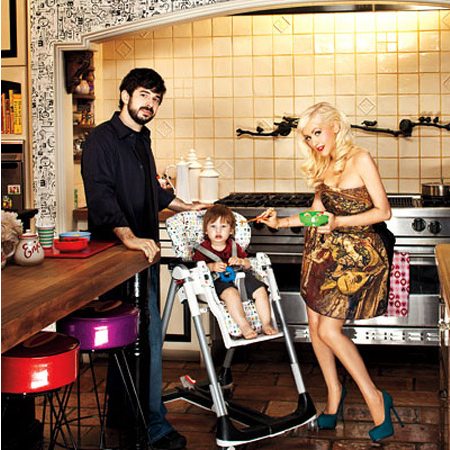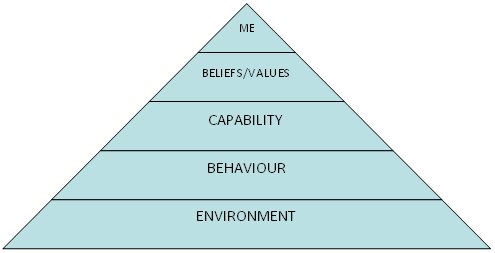NLP for Teachers: OutsideSchool. Part 3
Bonnie Tsai, France
Bonnie Tsai is a teacher and teacher trainer who has worked around the world running teacher training courses for teachers of all ages, levels, and needs. She has been trained in such humanistic approaches such as Suggestopaedia, N.L.P. and Psychodramaturgie Lingusitque. She has studied the theory and practice of Multiple Intelligence with Dr. Howard Gardner at Harvard University. Long time Pilgrims trainer. e-mail: tsaibonnie@hotmail.com / www.bonnie.tsai.net
Menu
Introduction
Outside school
A Free Time Activity: Cooking
NLP Friendly Grammar for Free Time Activities
Free Time Activities: Personalizing Writing
This the third and last in a series of articles inspired by the wonderful group of teachers who chose to follow the NLP Course for teachers run by Pilgrims in July, 2009. ( For more see: Different Strokes for Different Folks and Back Home: Using NLP in the Classroom.)
Most of the teachers chose this course because they were motivated to improve the learning environment in their classroom and at the same time increase the learning capacity of their students. All of them quickly dived into the concept of multi-sensory teaching and its effect of learning, memory and recall.
The following activity is built around the general theme of OUTSIDE SCHOOL was planned by Nina, Susana, Noemi and Juta-all coming from different parts of Europe. It is aimed at elementary or lower intermediate level students.
The general theme these four teachers choose to use is activities students like to do outside of school time. So they begin with a brainstorm of free time activities.
Ask students to come and write their favourite free time activity on the board.
Using the activities from the board, ask students working in pairs to talk about their activity using a Kolb’s Square.
What?
|
When?
|
Where?
|
What Time?
|
Give students a list of adjectives they can use to describe their free time activity:
relaxing dangerous exciting great fun intelligent
quiet adventurous interesting amusing peaceful
energizing frightening competitive okay inspiring
Join two pairs together to share information about their favourite activity.
The aims of the activity are to:
- develop sensory acuity (NLP) and communication skills
- revise vocabulary related to cooking as a free time activity
Vocabulary words were chosen while keeping the VAKOG modalities in mind, e.g. make, cook, mix – kinaesthetic (actions); warm, lovely – kinaesthetic (feelings); hear, sizzle – auditory; see, huge round table, look up – visual; smell, cinnamon – olfactory; taste, vanilla ice-cream, apple pie – gustatory.
The VAKOG modalities are also used in the follow-up tasks, e.g. what can you smell in your kitchen? (O) If the boys are not very interested in cooking, introduce Jamie Oliver to give the activity a “manly” touch.
More advanced students may create quite different dialogues and not rely so much on the example. Encourage them to think about what they can see (V), do (K), feel (K), hear (A), smell (O) and taste (G). This could also be an interesting way to do the activity in a mixed level class.
Ask students to imagine that they are in a kitchen.
☺ Tell them to draw a picture or a plan of the kitchen and compare their drawing with that of student next to them.
Now answer to the following questions and share your ideas with the other students:
☺ What can you smell in your kitchen? Write a couple of words on your drawing.
☺ How does it feel to be in your kitchen? Is it cosy, warm, lovely, comfortable, small, big, cold, uncomfortable?
☺ What would you like to cook in your kitchen? Encourage them to think about their favourite food.
Complete the dialogue with the words in the box and act it out with the student
next to you.
| apple pancakes, cinnamon, cookery book, Friday, mix, smell, sugar, them, tiny pieces of apple, vanilla ice-cream
|
Wendy: Hi, Tom! What are your plans for this afternoon?
Tom: It’s ................................ , no homework, so we have lots of time. Why don’t we make ................................. ?
Wendy: That’s great! But I don’t know how to make ................................... .
Tom: Let’s look it up in Mum’s ....................................... . See, it’s easy. We need some flour, eggs, ......................... , milk and ............................... . Then we ........................ them all. We can also put a little ........................ in to make them taste better. When our pancakes are ready, we can eat them with strawberry jam and some ...................... . What do you think?
Wendy: Mmm, I can already ........................... them. Let’s start now, then we’ll be ready when Mum and Bob come home. It’ll be a surprise!

Figure 1 Jamie Oliver

Figure 2 Christina Aquilera's kitchen
For this activity we assume that students are already familiar with the present simple tense and the modal verb can/can’t. They would also have had contact with adverbs of frequency.
Revise and raise students’ level of awareness of the 3rd person singular in the present simple tense. They would also need a prior contact with infinitives and “ing” structures and the position of adverbs of frequency. This activity will especially appeal to the auditory and kinaesthetic senses.
Ask for 3 students to come and stand in front of the class. Assign them one word from the first model sentence.
The class reads the sentence while observing the people standing in front of the class.
Students standing in front of the class arrange themselves according to the word order of the sentence.
Add students from the class as sentences become more complex. E.g. ing, s hate, never, always, and so on.
Here are the sentences:
- I/play/tennis
- Do/you/play/tennis
- I/can/play/tennis
- I/love/play/ing/tennis
- She/play/s/tennis
- Does/she/play/tennis
- She/can’t/play/tennis
- She hate/s/play/ing/tennis
- She/never/play/s/tennis/
- She/always/play/s/tennis
This activity will take around 55 minutes to complete.
While it was created for elementary-low intermediate students, it can be easily adapted to higher levels.
This activity will make use of multi-sensory language used in NLP for both speaking and writing tasks.
It will also draw on logical levels of living and thinking used as the basis for the first in this series of articles.

Logical Levels of Thinking and Living
Material needed:
- Cards with representations corresponding to specific words or expressions of a text that will be dictated.
- Small cards with collocations
Dictation
This dictation will focus on the topic through the use of visual (v), auditory, (a), Kinesthetic (k) stimuli.
Ask students to have a pen and paper ready to use during the dictation.
To take down the dictation, student will have to observe the teacher very closely.
The teacher will give the dictation using body language, verbal language and visual language via the representations on the cards.
Students will state the unspoken part of the dictation out loud in order to enable the teacher to guide them towards a successful outcome.
Dictation
I love playing tennis with my friends John and Paula, because they are very good at it. But I hate playing tennis with Mary because she always gets angry if she loses.
We always play tennis at the sports centre near my house. We meet at six o’clock everyday after we do our homework.
I always play with Paula and John plays with Mary. Paula and I usually win, because we can run very fast. But sometimes John and Mary win because their rackets are excellent.
I feel very relaxed and happy when I play with John, Paula, and even Mary.
(This type of dictation follows The Silent Way tradition where the teacher will speak as little as possible in order to give students the space to actively participate in the creation of the text.)
Using Collocations
Make cards with verbs on them. Make another set of cards with free time activities on them. Useful verbs to use to make the collocation are: play-do-go-make

Students move around the class to find a card that matches to form a collocation.
Tell them not to show there cards, but rather to mine the verb and free time activity. When they find a match, they sit down together.
(This activity will not only be useful for sensory acuity, but also it will give the students the possibility to work with someone in the class they have never worked with before. It is very important that students have the chance to move in class. If the body doesn’t move, the brain doesn’t groove.
Interviewing a partner
One student is student A. S/he will think about an enjoyable free time activity they can make a mind map, a drawing, or take notes on the activity they choose.
Meanwhile Student B copies some questions dictated by the teacher.
When both are ready Student B will interview Student A.
Interview
- Which free time activity do you enjoy doing?
- Where do you usually practice this activity?
- How often do you practice it?
- Do you do it with your friends?
- Are you good at it?
- What aspect do you like the most?
- How do you feel when you are practicing this activity?
- Is there any aspect you don’t like?
- What is this activity for you: a hobby, a competition, an obligation?
- Draw a personal symbol to represent your free time activity.
(This questionnaire takes into account the Logical Levels of NLP. Through this activity student can express their environment, behaviour, capabilities, values, and identity.
Embodying an Object and Writing about its Daily Routines
Ask students to visualize an object they identify with their free time activity. They will draw it on a piece of paper and write its name next to it.
They will next imagine the daily routine of this object and write a short essay describing its normal day.
(This writing activity goes a long way to motivate student s to want to write since they can all identify themselves with the object that links them to a free time activity they love!

Please check the NLP for Teachers course at Pilgrims website.


|